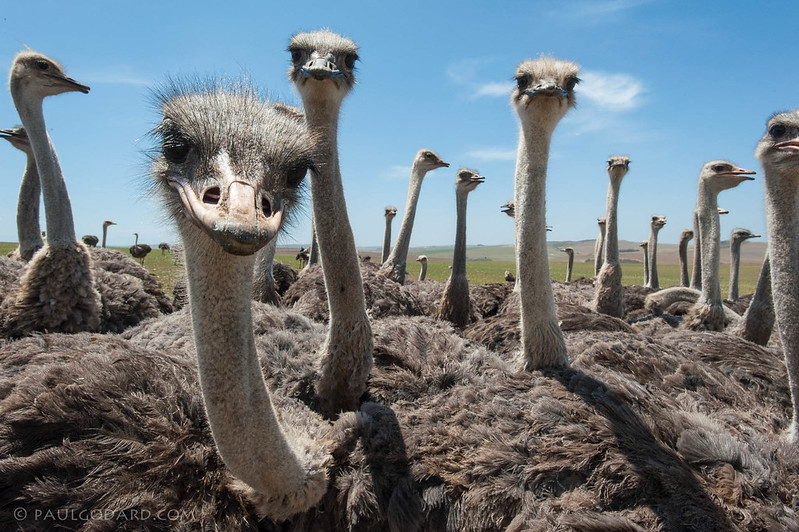The roadrunner is a ground-dwelling bird found in the deserts of the southwestern United States and Mexico. Known for its speed and agility, the roadrunner is a popular subject of folklore and popular culture. This article provides a comprehensive overview of the roadrunner, including its physical characteristics, habitat, behavior, diet, and cultural significance.

Physical Characteristics
Size and Appearance
The roadrunner is a medium-sized bird, measuring about 20-24 inches in length and weighing around 8-12 ounces. It has a long, slender body with a long tail and long legs. The roadrunner’s plumage is mostly brown, with a white belly and black markings on its head and wings. It has a distinctive crest of feathers on its head.
Beak and Feet
The roadrunner has a long, sharp beak that is used for catching and killing prey. Its feet are long and strong, with sharp claws that are used for running and climbing. The roadrunner is a very fast runner, and it can reach speeds of up to 20 miles per hour.
| Characteristic | Description |
|---|---|
| Length | 20-24 inches |
| Weight | 8-12 ounces |
| Plumage | Brown with white belly and black markings |
| Beak | Long and sharp |
| Feet | Long and strong with sharp claws |
| Speed | Up to 20 miles per hour |

Habitat and Distribution
Range and Habitat
The roadrunner is found in the deserts of the southwestern United States and Mexico. It prefers open areas with sparse vegetation, such as grasslands, deserts, and scrublands. The roadrunner is also found in some urban areas, where it can be seen running along roadsides and in parks.
The roadrunner is a non-migratory bird, meaning that it does not travel long distances to find food or shelter. It typically remains within a small home range, which it defends from other roadrunners.
Distribution Map
| State/Province | Country |
|---|---|
| Arizona | USA |
| California | USA |
| Nevada | USA |
| New Mexico | USA |
| Texas | USA |
| Sonora | Mexico |
| Chihuahua | Mexico |
| Coahuila | Mexico |
| Nuevo León | Mexico |
| Tamaulipas | Mexico |
Conservation Status
The roadrunner is a common bird, and its conservation status is listed as Least Concern by the International Union for Conservation of Nature (IUCN). However, the roadrunner is threatened by habitat loss and fragmentation, as well as by collisions with vehicles.
- Habitat loss and fragmentation
- Collisions with vehicles
- Pesticides and other pollutants
Conservation efforts are underway to protect the roadrunner and its habitat. These efforts include habitat restoration, public education, and research.

Behavior and Communication
Courtship and Mating
Roadrunners are monogamous birds, and they typically mate for life. The courtship ritual involves the male and female chasing each other and performing a series of elaborate displays. The male will also bring food to the female as a gift.
Roadrunners typically nest in trees or shrubs. The female will lay 2-4 eggs, which she will incubate for about 2 weeks. The chicks will fledge from the nest after about 3 weeks.
Vocalizations
Roadrunners are known for their distinctive vocalizations. They have a loud, harsh call that can be heard for miles. Roadrunners also use a variety of other vocalizations, including clicks, whistles, and chatters.
| Vocalization | Description |
|---|---|
| Coo-coo | A soft, guttural call used to attract a mate |
| Cackle | A loud, harsh call used to defend territory |
| Whistle | A high-pitched call used to communicate with other roadrunners |
| Chatter | A series of rapid clicks and whistles used to communicate with other roadrunners |
Communication
Roadrunners communicate with each other using a variety of vocalizations, body language, and scent marking. They use their vocalizations to attract mates, defend territory, and communicate with other roadrunners.
Roadrunners also use body language to communicate. They will fluff their feathers to make themselves look larger, and they will spread their wings to intimidate other roadrunners.
- Vocalizations
- Body language
- Scent marking
Roadrunners also use scent marking to communicate. They will deposit droppings in prominent locations to mark their territory.

Diet and Feeding Habits
Omnivorous Diet
Roadrunners are omnivorous birds, meaning that they eat a variety of plants and animals. Their diet includes insects, lizards, snakes, small mammals, birds, fruits, and seeds.
Roadrunners are opportunistic predators, and they will eat whatever is available. They are known to eat scorpions, tarantulas, and even small rattlesnakes.
| Food | Percentage of Diet |
|---|---|
| Insects | 50% |
| Lizards | 20% |
| Snakes | 10% |
| Small mammals | 10% |
| Birds | 5% |
| Fruits | 3% |
| Seeds | 2% |
Hunting Techniques
Roadrunners are skilled hunters. They use a variety of techniques to catch their prey, including running, jumping, and pouncing. Roadrunners are also known to use their sharp beaks to kill their prey.
- Running
- Jumping
- Pouncing
- Using their sharp beaks
“Roadrunners are fascinating birds with a unique diet and hunting habits. They are a testament to the diversity of life on Earth.”

Final Thought
The roadrunner is a truly unique and fascinating bird. Its speed, agility, and distinctive appearance have made it a popular subject of folklore and popular culture. The roadrunner is a reminder of the beauty and diversity of the natural world, and it is a bird that deserves our admiration and protection.




